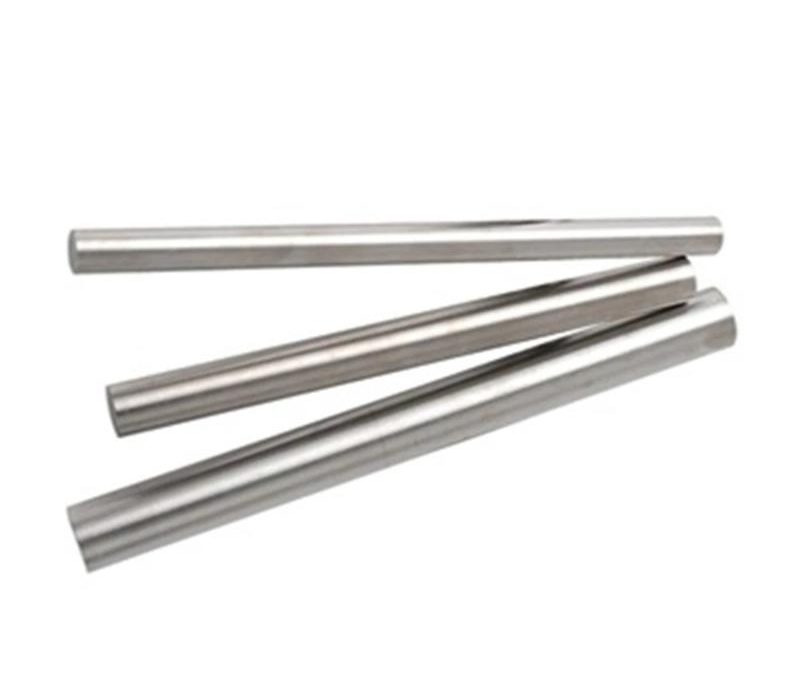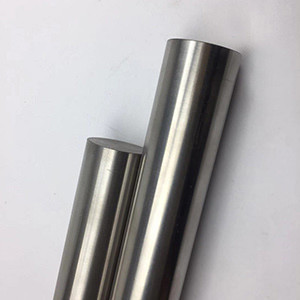Niobium – History
Niobium (Nb), previously known as columbium, is a chemical element with the atomic number 41. It’s primarily a malleable, grey, supple transition metal. Niobium’s main commercial source is from the pyrochlore mineral. The origin of the name is from Greek mythology; or Niobe, the daughter of Tantalus.XOT metals stocks a wide variety of sizes in Niobium rod and can supply custom rod sizes with short lead times.
Niobium (Nb), previously known as columbium, is a chemical element with the atomic number 41. It’s primarily a malleable, grey, supple transition metal. Niobium’s main commercial source is from the pyrochlore mineral. The origin of the name is from Greek mythology; or Niobe, the daughter of Tantalus.
Other applications of niobium include its use in welding, nuclear industries, electronics, optics, numismatics and jewelry. In the last two applications, niobium’s low toxicity and ability to be colored by anodization are particular advantages. Coating glass with a superfine niobium powder improves the glass’s ability to transmit light without absorbing or refracting it. The coating also makes glass more glare-resistant. Niobium-coated glass has applications for camera lenses, along with television and computer screens.
Niobium is used as an alloying agent and for jewelry. Other uses include adding small amounts to improve stainless steel, as an alloying agent in carbon and alloy steels and in non-ferrous metals to improve strength. It is key element in manufacture of jet engines and rockets.
Characteristics
Formability
The forming characteristics of niobium and niobium alloys should be similar to copper and some mild steels. A copper blank is sometimes attempted before utilizing niobium. Niobium sheet metal can be formed easily without special working techniques. These operations are facilitated by niobium’s low rate of work hardening. There are two unusual features that must be considered when working with niobium and its alloys. First, no appreciable softening occurs below 400°C (752°F), because of its high melting point. Also, sheathing protection is not practical, since the sheathing material is likely to be softer than the niobium. Niobium’s cold working properties are excellent. Annealing is necessary after the surface has been worked 90%, with heat treatment at 1200°C (2192°F) for one hour causing complete recrystallization of material cold worked over 50%. The annealing must be performed in an inert gas, or preferably, in a high vacuum.
Deep Draw Operations
Deep drawing of annealed niobium can be accomplished without much difficulty. Tool materials such as steel, aluminum bronzes, and beryllium copper can all be used for drawing operations. Single draws can be made if the depth of the draw does not exceed the diameter of the blank, and if multiple draws are made, the depth of the first draw should not exceed 40% of the blank diameter. For multiple draws, it may necessary to perform an intermediate vacuum anneal. Sulfonated tallow can be used as a lubricant.
Niobium Rod Introduction
- Niobium and niobium alloy rod & bar are widely used in chemistry, electronics, aerospace and other fields due to its advantages of high melting point, corrosion resistance and cold processing.
- Appearance quality: cold and annealed rods are free of cracks, folds, holes, metal and non-metallic inclusions, cold-lap, residual lubricant, oxides and other smudges on the surface while hot treatment rods are free of cracks, folds and double-skin
Available Alloys of Niobium Rod
- Niobium
- Niobium 1% Zirconium
- Niobium 47% Titanium
- Niobium 50% Titanium
- Niobium 55% Titanium
- C-103 (89% Nb, 10% Hf, 1% Ti)
Specification for Niobium Rod
Material: R04200-Type 1 -Reactor grade unalloyed niobium
R04210-Type 2 -Commercial grade unalloyed niobium
R04251-Type 3—Reactor grade niobium alloy containing 1 % zirconium
R04261-Type 4—Commercial grade niobium alloy containing 1 % zirconium
R40220-Type 5 -RRR grade pure niobium
Size: 3mm-55mm diameter x L<1400mm, while larger rods will be named as niobium ingot
Standard: As per ASTM B392
Purity: >=99.9%
| Niobium and Niobium Alloys Rod & Bar Chemical Composition (wt%≤) | ||||
|---|---|---|---|---|
| Element | Niobium R04200 | Niobium R04210 | Nb-1%Zirconium R04251 | Nb-1%Zirconium R04261 |
| C | 0.01 | 0.01 | 0.01 | 0.01 |
| N | 0.01 | 0.01 | 0.01 | 0.01 |
| O | 0.015 | 0.025 | 0.015 | 0.025 |
| H | 0.0015 | 0.0015 | 0.0015 | 0.0015 |
| Zr | 0.02 | 0.02 | 0.8 to 1.2 | 0.8 to 1.2 |
| Ta | 0.1 | 0.3 | 0.1 | 0.5 |
| Fe | 0.005 | 0.01 | 0.005 | 0.01 |
| S | 0.005 | 0.005 | 0.005 | 0.005 |
| W | 0.03 | 0.05 | 0.03 | 0.05 |
| Ni | 0.005 | 0.005 | 0.005 | 0.005 |
| Mo | 0.010 | 0.020 | 0.010 | 0.050 |
| Hf | 0.02 | 0.02 | 0.02 | 0.02 |
| Ti | 0.02 | 0.03 | 0.02 | 0.03 |
| B | 2ppm | - | 2ppm | - |
| Al | 0.002 | 0.005 | 0.002 | 0.005 |
| Be | 0.005 | - | 0.005 | - |
| Cr | 0.002 | - | 0.002 | - |
| C | 0.002 | - | 0.002 | - |
| Niobium and Niobium Alloys Rod & Bar Mechanical Property | |||
|---|---|---|---|
| Grade | Ultimate Tensile Strength, Min, Psi(MPa) | Yield Strength, Psi(MPa) | Elongation min %,mm |
| Types 1 and 2 | 18 000 (125) | 10 500 (73) | 20 |
| Types 3 and 4 | 28 000 (195) | 18 000 (125) | 15 |
| Diameter Inch (mm) | Tolerance+/-Inch (mm) |
|---|---|
| 0.030 ~ 0.060 (0.76 ~ 1.52) | 0.01 (0.025) |
| 0.060 ~ 0.090 (1.52 ~ 2.29) | 0.015 (0.038) |
| 0.090 ~ 0.125 (2.29 ~ 3.18) | 0.02 (0.051) |
| 0.125 ~ 0.187 (3.18 ~ 4.75) | 0.003 (0.076) |
| 0.187 ~ 0.375 (4.75 ~ 9.53) | 0.004 (0.102) |
| 0.375 ~ 0.500 (9.53 ~ 12.7) | 0.005 (0.127) |
| The tolerance can be adjusted based on customer's request. | |
Niobium Rod & Niobium Bar Standard
All niobium and niobium alloys rod & bar products follow standard ASTM B392, such as pure niobium rod & bar (R04200 , R04210) , Nb1Zr (R04251 R04261) , Nb10Zr , C103, Cb752, C129Y, FS85, Nb50Ti rod & bar and so on.
Niobium Rod Niobium Bar Features
- Niobium Rod and Niobium Metal Bar have the following features:
- Low density and high specific strength
- Excellent corrosion resistance
- Good resistance to the effect of heat
- High melting point, good anti-corrosion, excellent super-conduction, and other unique characteristics
Niobium (Nb) Rod Applications:
- Used in making vacuum furnaces’ attachments and supports of high temperature
- Used for the manufacturing of reaction vessels.
- Used in equipments which are resistant to nitric acid, sulfuric acid, hydrochloric acid
- Used in manufacturing super alloys and electron-beam melting. (high-temperature alloys like Ta-Nb alloys, corrosion-resistant alloy additives.)
- Used in chemical industry and oil industry (corrosion resistance equipment)
If you need any assistance for niobium and niobium alloys rod & bar products, please contact us.


